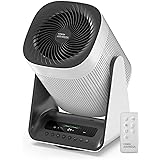In the competitive world of e-commerce, Shopify stores require more than just outstanding products and a visually appealing website to thrive. Blogging is essential for achieving first-page search engine positions, attracting qualified traffic, and converting visitors into devoted clients. Integrating a well-planned blogging strategy into your Shopify SEO efforts can result in big development. Below, we look at how blogging affects SEO performance and describe ways to increase its effectiveness.
1. Boost Organic Traffic with Targeted Keywords
A blog is a good venue for targeting a diverse set of keywords, including long-tail and informational queries, which are tough to incorporate into product pages.
- Write blog pieces that address common queries about your products. For example, if you sell skincare, publish articles titled “How to Choose the Right Moisturizer for Dry Skin” or “The Benefits of Organic Skincare.”
- Use LSI (Latent Semantic Indexing) keywords to ensure that your content ranks for relevant search phrases.
- Use keyword research tools such as Ahrefs, SEMrush, and Google Keyword Planner to find high-value keywords that your target audience is searching for.
You may improve your search engine results page (SERP) visibility by strategically incorporating these keywords in your blog entries.
2. Build Authority and Trust with Valuable Content
Search engines favor websites that indicate expertise, authority, and trustworthiness (E-A-T). Blogging allows you to demonstrate your industry knowledge and establish credibility with your target audience.
- Create in-depth educational content that targets your target audience’s problem areas and offers answers.
- Publish how-to guides, tutorials, and case studies to establish your Shopify store as a thought leader in your industry.
- Use data-backed insights, client testimonials, and expert viewpoints to improve the quality of your content.
As your blog builds authority, it will increase your whole domain authority, resulting in higher results throughout your website.
3. Improve Internal Linking Opportunities
Blogs are a great method to incorporate internal linking, which improves site navigation and distributes link equity throughout your Shopify store.
- Link to relevant pages regarding products in your blog posts to route traffic to crucial pages. A blog post titled “Top Fitness Gadgets for 2024,” for example, includes a direct link to your items.
- Create pillar blog entries that link to related cluster material and vice versa, resulting in a robust subject cluster for better SEO.
- Use descriptive, keyword-rich anchor text to assist search engines understand the context of your internal hyperlinks.
Internal linking also reduces bounce rates by encouraging visitors to visit more pages on your website, which improves SEO metrics.
4. Attract High-Quality Backlinks
High-quality backlinks are one of the most important aspects in SEO performance. Blogs that give valuable, shareable content will automatically draw links from other websites.
- Publish data-driven studies, data visualizations, and unique research that other websites and bloggers will want to cite.
- Collaborate with influencers and industry experts on guest pieces and interviews to increase the likelihood of gaining backlinks.
- Share your blog’s material on social media sites and in online forums to increase its reach and linkability.
The more backlinks your blog receives, the greater your Shopify store’s domain authority, which improves overall rankings.
5. Target Different Stages of the Buyer’s Journey
Not every visitor to your website is prepared to make a purchase. Blogging enables you to target customers at different stages of the buyer’s journey, from awareness to decision.
- Awareness Stage: Write blogs about common problems or trends.
- Consideration Stage: Focus on comparison pieces, such as “Top 5 Eco-Friendly Clothing Brands Compared.”
- Decision Stage: Create material titled “Why Our Brand Offers the Best Sustainable Apparel for Professionals.”
By catering to all stages of the funnel, you can nurture leads and increase the possibility of conversion.
6. Enhance On-Page SEO with Blog Content
Blogs provide several chances to optimize on-page SEO aspects, allowing search engines to better index your website.
- Create engaging meta titles and descriptions with primary and secondary keywords.
- Use suitable header tags (H1, H2, H3) to organize your material and increase readability.
- Optimize your blog posts’ photos with descriptive alt language and compressed file sizes to improve load times.
- Use schema markup for blog posts to improve search engine understanding and exposure in SERPs.
A well-optimized blog content can rank for several keywords, resulting in consistent organic traffic over time.
7. Keep Your Website Fresh with Updated Content
Search engines prefer websites that routinely update their material. Blogging enables you to continuously upload new content to your Shopify store.
- Update previous blog entries with fresh information to keep them relevant and correct.
- Repurpose successful blog pieces into different media, like as videos or infographics, to increase interaction.
- Use seasonal trends to create timely content that reflects current client preferences.
Regular blogging indicates to search engines that your website is active, which might boost your ranks.
8. Increase User Engagement and Dwell Time
Engaging blog content keeps users on your website longer, a metric known as dwell time, which sends a positive signal to search engines.
- Use compelling headlines and openers to pique the reader’s interest from the outset.
- Use multimedia components such as movies, photos, and infographics to make your blog entries more visually engaging.
- Include interactive elements, such as polls and comment sections, to stimulate audience involvement.
The longer people spend on your website, the more likely search engines will rank your content higher.
9. Support Email Marketing and Retargeting Efforts
Blogs supplement your email marketing and retargeting initiatives by boosting traffic and nurturing leads.
- Use blog content as a lead magnet by providing downloadable resources, like as e-books or manuals, in exchange for email addresses.
- To keep your audience interested, send out email newsletters with your most recent blog entries.
- Retarget blog readers with ads that highlight relevant products or promotions based on their preferences.
Integrating blogging into your marketing activities results in a more unified strategy for lead generation and sales.
10. Stand Out with Unique and Consistent Branding
Your blog is a reflection of your Shopify store’s brand identity. Use it to express your voice and ideals.
- Maintain a consistent tone and style for all blog postings.
- Highlight your brand’s mission, principles, and expertise to connect with your audience on a more profound level.
- At the end of each piece, provide a clear call to action (CTA) that encourages readers to learn more about your products or contact your staff.
A strong brand presence on your blog increases loyalty and sets your Shopify store apart from the competition.
Including blogging in your Shopify SEO plan is critical for long-term success. It not only boosts your search engine rankings, but it also fosters trust, engages your target audience, and increases conversions.
Trance 100% Waterproof Premium Cotton Feel Mattress Protector King Size 78x72 Inches | Breathable and Hypoallergenic Ultra Soft Fitted Bed Protector Cover (78"x72" Fits Upto 10 Inches - King, Grey
₹669.00 (as of 20 November, 2024 18:31 GMT +05:30 - More infoProduct prices and availability are accurate as of the date/time indicated and are subject to change. Any price and availability information displayed on [relevant Amazon Site(s), as applicable] at the time of purchase will apply to the purchase of this product.)2 Pcs Kitchen Mats, Waterproof Memory Foam Kitchen Rugs, Standing Desk Mat Floor Mats, Comfort Runner Rug Carpets for Kitchen Floor, Sink (c)
₹549.00 (as of 21 November, 2024 18:32 GMT +05:30 - More infoProduct prices and availability are accurate as of the date/time indicated and are subject to change. Any price and availability information displayed on [relevant Amazon Site(s), as applicable] at the time of purchase will apply to the purchase of this product.)Boldfit Water Bottles Stainless Steel Water Bottle 1 Litre Steel Water Bottles for School, Office, Home, Gym 1 Litre Water Bottle for Men Leakproof, Rust Free Steel Bottle -1000 ml Water Bottle Black
₹329.00 (as of 21 November, 2024 18:32 GMT +05:30 - More infoProduct prices and availability are accurate as of the date/time indicated and are subject to change. Any price and availability information displayed on [relevant Amazon Site(s), as applicable] at the time of purchase will apply to the purchase of this product.)Coway Airmega Aim Professional Air Purifier For Home, New Launch, Longest Filter Life 8500 Hrs, Traps 99.99% Virus & Pm 0.1 Particles, Manufacturer Warranty Of 7 Years - White
₹9,999.00 (as of 20 November, 2024 18:31 GMT +05:30 - More infoProduct prices and availability are accurate as of the date/time indicated and are subject to change. Any price and availability information displayed on [relevant Amazon Site(s), as applicable] at the time of purchase will apply to the purchase of this product.)OPTIFINE Study Table/Bed Table/Foldable and Portable Wooden/Writing Desk for Office/Home/School (Black-COTTED-Black)
₹479.00 (as of 21 November, 2024 18:32 GMT +05:30 - More infoProduct prices and availability are accurate as of the date/time indicated and are subject to change. Any price and availability information displayed on [relevant Amazon Site(s), as applicable] at the time of purchase will apply to the purchase of this product.)Discover more from The General Post
Subscribe to get the latest posts sent to your email.





